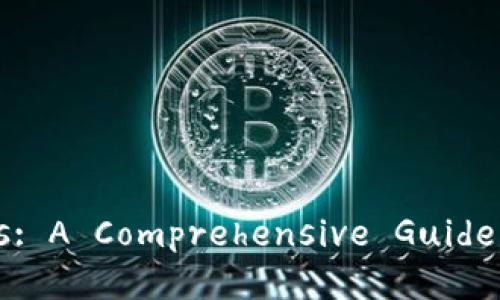### Introduction to Tokenomics
In the ever-evolving landscape of cryptocurrency, the concept of **tokenomics** has emerged as a critical area of study, providing insights into the economics surrounding digital tokens within blockchain networks. Tokenomics encompasses the design and implementation of token systems and their economic implications, offering a framework for understanding how value is created, distributed, and exchanged in the digital economy.
Tokens, which can broadly be categorized into utility tokens, security tokens, and governance tokens, serve different purposes within their respective ecosystems. Understanding these distinctions, alongside their applications in various blockchain communities, is essential for anyone keen on navigating the crypto space, whether as an investor, developer, or enthusiast.
In this in-depth exploration of tokenomics, we will discuss the following aspects:
1. Definition of Tokenomics
2. Types of Tokens
3. Economic Models of Tokens
4. The Role of Tokenomics in ICOs and DeFi
By the end of this article, you will have a solid grasp of tokenomics, its relevance in the cryptocurrency world, and its implications for the future of digital assets.
### Definition of Tokenomics
Tokenomics refers to the study and design of the economics of tokens within blockchain networks. It is a combination of the words 'token' and 'economics,' encapsulating the principles of supply, demand, and value attribution associated with tokens. It includes a wide array of elements: the creation of tokens, their intended use cases, the distribution mechanisms, and the underlying incentive structures that motivate user behavior.
The foundations of tokenomics stem from traditional economic principles, but they are tailored to fit the unique environment of blockchain technologies. The goal of effective tokenomics is to create a sustainable ecosystem that encourages user participation, facilitates transactions, and grows the overall value of the network.
### Types of Tokens
Tokens can be broadly categorized into several distinct types, each serving specific purposes within their ecosystems. Here’s a closer look at three major types:
#### 1. Utility Tokens
Utility tokens are designed to provide access to specific services or products within a blockchain ecosystem. They are not intended as investments but rather as tools for enabling interactions within the platform. A prime example of utility tokens is the Basic Attention Token (BAT), which is used in the Brave Browser to reward users for viewing advertisements.
Utility tokens are often issued during Initial Coin Offerings (ICOs), where they are sold to raise funds for the development of the project. Their value is closely tied to the use case and demand for services on the platform.
#### 2. Security Tokens
Security tokens represent ownership in a real-world asset or company, akin to traditional securities. They are subject to regulatory scrutiny, as they often represent an investment contract and are regulated by securities laws. Examples include tokenized real estate or equity in startups.
The distinct advantage of security tokens lies in their ability to provide investment opportunities in assets that were previously illiquid or out of reach for average investors. They are also designed to enhance transparency, liquidity, and compliance with regulations.
#### 3. Governance Tokens
Governance tokens are a relatively new entry in the tokenomics space, enabling holders to participate in the decision-making processes of decentralized organizations (DAOs). These tokens typically grant voting rights on proposals related to the network’s development, allowing users to have a say in protocols, funding decisions, and more.
A well-known example of governance tokens is the MakerDAO’s MKR, which allows holders to influence changes to the DAI stablecoin's stability fee or collateral types.
### Economic Models of Tokens
The economics of tokens can significantly influence their viability and success. The design of the economic model involves several critical elements:
#### 1. Supply and Demand
Understanding the supply and demand dynamics is essential for any token's success. Tokenomics often involves creating a finite supply of tokens to enhance scarcity and drive up demand. Conversely, if a project releases too many tokens too quickly, it can lead to inflation and devalue the asset.
#### 2. Incentive Structures
Effective tokenomics requires developing incentive mechanisms that encourage users to participate in the network. This may include rewards for staking, liquidity providers, or incentivizing term deposits with higher returns. The design of these incentives can directly affect the user experience, thus influencing engagement and retention rates.
#### 3. Distribution Mechanisms
The method of distributing tokens affects the adoption and initial market response. Popular methods include airdrops, ICOs, and pre-mining. Each method comes with its advantages and disadvantages, and proper planning is necessary to align the distribution with the long-term goals of the project.
#### 4. Use Cases and Real-World Applications
The viability of a token also hinges on its use case within the ecosystem. Tokens should solve real problems, provide unique functionalities, and create value for users. Successful tokenomics integrates a clear understanding of user needs within the system.
### The Role of Tokenomics in ICOs and DeFi
Tokenomics plays a pivotal role during ICOs and in the decentralized finance (DeFi) sector:
1. **Initial Coin Offerings (ICOs)**: Tokenomics helps in designing compelling whitepapers that elucidate the token's function, distribution plans, and intended use cases. Well-structured tokenomics can enhance investor confidence, drive successful fundraising campaigns, and pave the way for a strong community build-up.
2. **Decentralized Finance (DeFi)**: DeFi has emerged as one of the most significant applications of tokenomics, where tokens are used for lending, borrowing, and trading without central intermediaries. Understanding tokenomics helps in navigating the myriad platforms, understanding yield farming, liquidity mining, and governance structures inherent in DeFi environments.
### Related Questions
#### Question 1: How do tokens differ in their functionalities and purposes?
Tokens are versatile and can serve different functions based on their design and purpose. The primary differences lie in whether they are categorized as utility, security, or governance tokens, each with its own functionalities.
**Utility Tokens** play a role in facilitating transactions within a blockchain, granting users access to products or services. They create an ecosystem where users can interact seamlessly, often with rewards for participation.
**Security Tokens**, on the other hand, are more aligned with traditional financial instruments, representing underlying assets or shares. They bear intrinsic value tied to the performance of tangible assets and come with investor rights and regulatory oversight.
**Governance Tokens** enable community-based decision-making, allowing active participants to shape future developments in a decentralized manner. Users with governance tokens can vote on protocol changes, fostering a more inclusive model for decision-making.
Ultimately, the choice between tokens hinges on their intended users and use cases. Successful projects often blend various token types to create a dynamic ecosystem that addresses user needs while remaining legally compliant.
#### Question 2: What challenges does the field of tokenomics face?
Despite the potential benefits of tokenomics, it faces numerous challenges that can hinder its growth and adoption:
1. **Market Volatility**: The crypto market is notoriously volatile, making it challenging to maintain a steady or predictable value for tokens. Sudden fluctuations in price can deter long-term investments and lead to widespread mistrust from potential users.
2. **Regulatory Uncertainty**: The evolving regulatory landscape introduces risks, as governments grapple with how to categorize tokens. For projects that are not clearly defined, there is significant uncertainty about compliance, especially regarding security tokens.
3. **User Adoption**: Convincing users to adopt a new token or blockchain project requires robust marketing and education. Users must understand the value proposition and how they can benefit from using the token.
4. **Technical Complexity**: Many users find the technical intricacies of tokenomics daunting. From understanding gas fees in transactions to differentiating between various token standards, the barrier to entry can sometimes feel high.
Successfully navigating these challenges requires not only clear communication and transparency from project teams but also a commitment to fostering a user community that feels valued and engaged.
#### Question 3: How can investors evaluate the viability of a token based on its tokenomics?
Investors can assess token viability through several critical lenses:
1. **Whitepaper Analysis**: A well-written whitepaper should comprehensively outline the purpose of the token, its economic model, and the roadmap. Investors should critically assess whether the token solves a problem, the use case's feasibility, and the team's experience.
2. **Token Supply and Distribution**: Consider the total supply of tokens and the distribution mechanisms. Scarcity can drive value, while a clear distribution plan that prevents excessive concentration of wealth among early investors is favorable for long-term health.
3. **Market Movement and Liquidity**: Analyzing trading volumes and market stability can offer invaluable insights into how active and engaged the community is. High liquidity generally indicates the ability to enter and exit positions easily, which is crucial for investors.
4. **Community Engagement**: Active community involvement is a strong indicator of a project’s health. Founders who engage with their users demonstrate a commitment to the project's vision, and a thriving community can serve as a catalyst for adoption.
By employing these evaluation strategies, investors can make more informed decisions, minimizing risks while maximizing their potential for returns.
#### Question 4: What is the future of tokenomics in the broader financial landscape?
The future of tokenomics in the financial landscape appears promising. As digital assets continue to gain traction, tokenomics will evolve, becoming increasingly integrated into mainstream financial systems. Here are a few trends to consider:
1. **Regulatory Developments**: Governments worldwide are beginning to provide frameworks for the treatment of digital assets. As regulations become clearer, they will foster trust and encourage institutional investment.
2. **Interoperability**: The trend toward creating interoperable blockchain solutions will enhance the utility of tokens across multiple platforms. This could lead to increased value creation as projects collaborate and exchange value more freely.
3. **Mainstream Adoption**: As users become more comfortable with blockchain technology, the adoption of tokens will likely grow. Tokenomics will play a pivotal role in lowering the barriers to entry for everyday users, facilitating greater participation in decentralized networks.
4. **DeFi Expansion**: The rise of DeFi is not just a passing trend; it’s transforming the way individuals think about finance. Tokens within this ecosystem will flourish as they provide innovative solutions for borrowing, lending, and trading.
In summary, tokenomics will continue to shape the landscape of digital finance, promoting efficiency, accessibility, and transparency in transactions. Ongoing research, innovation, and regulatory clarity will be key drivers in realizing the full potential of tokenomics.
### Conclusion
Tokenomics represents a fascinating convergence of digital technology and traditional economic principles. Its diverse applications across utility, security, and governance tokens mirror the complexity and dynamism of the broader cryptocurrency landscape. As investors and developers continue to explore the economic ramifications, tokenomics will undoubtedly play a pivotal role in shaping the future of the decentralized financial system. Understanding its intricacies, challenges, and potential impacts enables stakeholders to navigate the evolving terrain effectively. As tokenomics matures, it holds the promise of driving value creation while fostering a more inclusive, transparent, and efficient financial world.
This detailed examination shows that a solid grasp of tokenomics is imperative for anyone wishing to engage with cryptocurrency meaningfully. With its impact reaching far beyond cryptographic barriers, the study of tokenomics offers vast potential for growth, understanding, and innovation in tomorrow’s digital economy.


tpwallet
TokenPocket是全球最大的数字货币钱包,支持包括BTC, ETH, BSC, TRON, Aptos, Polygon, Solana, OKExChain, Polkadot, Kusama, EOS等在内的所有主流公链及Layer 2,已为全球近千万用户提供可信赖的数字货币资产管理服务,也是当前DeFi用户必备的工具钱包。

